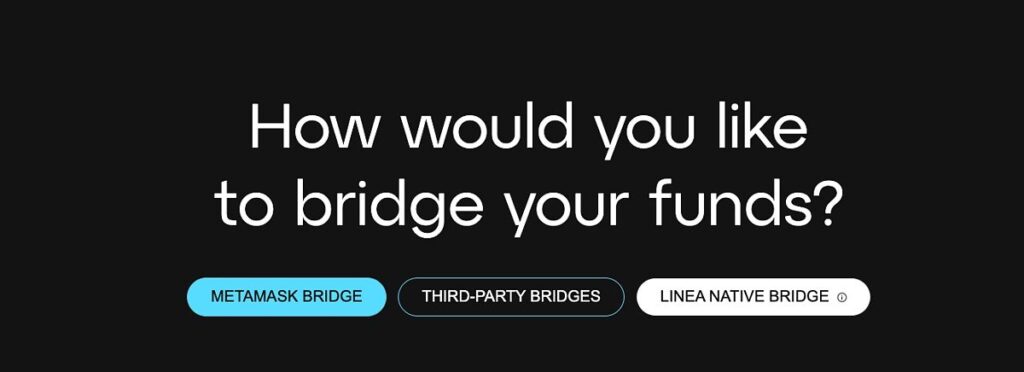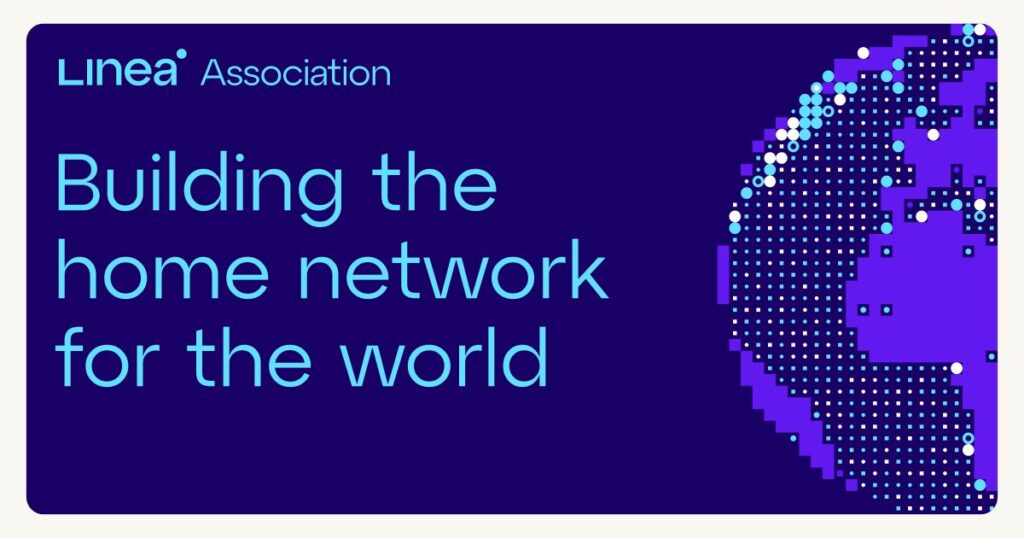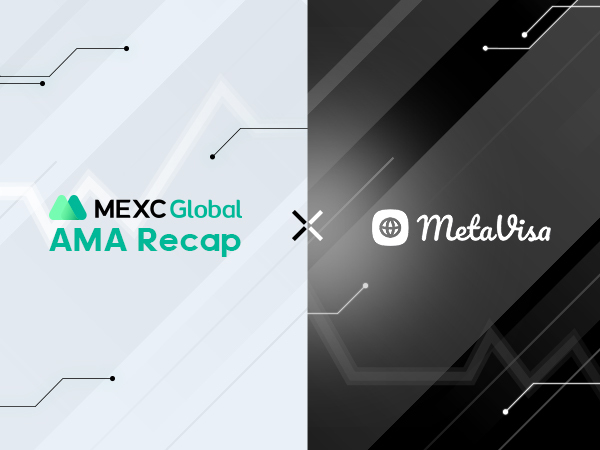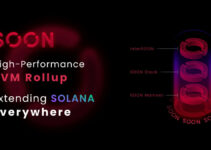Introduction
Linea is initiated by ConsenSys , built by core developers ofEthereumto create a Type-2 zkEVM Layer-2 scaling network, adhering to the vision of ‘Home Network for the World’ and establishing a user-centric hub for daily life and interactions on-chain. Since its mainnet launch in July 2023, Linea has rapidly experienced explosive growth. By 2025, it has processed over 230 million transactions, partnered with more than 420 ecosystem partners, achieved a TVL of $412 million, and boasts over 317,000 daily active users with a processing capacity of 6,200 TPS, where transaction fees are approximately 1/25–1/30 of Ethereum’s mainnet.的 Type‑2 zkEVM Layer‑2 扩容网络,秉承“Home Network for the World”愿景,打造用户链上日常生活与交互中心。自 2023 年 7 月主网上线后,Linea 迅速爆发式增长。截至 2025 年,累计交易超 2.3 亿笔,生态伙伴超过 420 家,TVL 达 4.12 亿美元,并拥有超过 317,000 日活跃用户、6200 TPS 的处理能力,交易费用相当于以太坊主网的 1/25–1/30。
Technically, Linea belongs to the Type-2 zkEVM , fully compatible with EVM, allowing Ethereum DApps to be deployed without code migration. Its underlying technology utilizes recursive zk-SNARKs (including Vortex, Arcane, PLONK frameworks) and post-quantum cryptography to enhance performance, security, and privacy. The network also supports cross-chain compatibility, account abstraction, and modular architecture design to optimize user experience and promote the decentralized governance roadmap.
In addition, Linea has no native tokens, Gas fees are paid directly in ETH, and community incentives are provided in the forms of L-XP, Voyage, etc. The ecosystem empowers alliances to support developer resource investments, enhancing network vitality and community participation.

Key Takeaways
- Linea is a Type-2 zkEVM Layer-2 network launched by ConsenSys and developed by the Ethereum core team, with full EVM equivalence, allowing applications to be migrated and deployed without changing already deployed contracts.
- High performance and low fees: The network can handle up to 6,200 TPS, with Gas fees approximately 25–30 times lower than Ethereum’s mainnet, effectively reducing transaction costs and enhancing user experience.
- Strong ecosystem expansion: By 2025, there are over 420 ecosystem partners, a TVL of $412 million, and more than 317,000 daily active wallets, covering fields such as DeFi, NFT, and gaming.
- Zero-knowledge + post-quantum resistant architecture: Employing recursive zk-SNARKs and lattice-based cryptography (Vortex, Arcane, PLONK) to enhance verification efficiency, security, and privacy protection capabilities.
- Featuring cross-chain interoperability, account abstraction, and modular architecture: Supporting cross-chain bridging, stablecoin Gas payments, fast withdrawals, and a convenient development experience, driving long-term community governance transformation.
1. Overview of the Linea Project
1.1 Background and Vision of Linea

Linea is a Layer 2 blockchain project incubated by ConsenSys aiming to address the scalability bottlenecks of the Ethereum mainnet through zero-knowledge proof (Ethereum Layer 2(二层)区块链项目,旨在通过零知识证明(Zero-Knowledge Proof, abbreviated as ZK) technology, providing a low-cost, high-throughput blockchain network fully compatible withEthereum Virtual Machine (EVM). Linea’s core vision is to bring blockchain technology into broader application scenarios, promoting the realization of ‘Live Onchain’ by improving transaction speed, lowering Gas fees, and maintaining the security and decentralization features of Ethereum.
Linea is developed by ConsenSys, a leading company in the Ethereum ecosystem, whose products include the popular MetaMask wallet (with over 30 million monthly active users) and Infura development tools (over 400,000 users). Linea launched its Alpha mainnet in July 2023, quickly becoming one of the fastest-growing zkEVM (Zero-Knowledge Ethereum Virtual Machine) networks, attracting more than 100,000 weekly active users and 2.7 million transactions. As of 2025, Linea’s total value locked (TVL) has reached $412.3 million, with over 350 applications in the ecosystem covering DeFi, NFT, and blockchain gaming.
1.2 Positioning and Goals of Linea
Linea is positioned as a vertical scaling solution for Ethereum, employing zk-Rollup technology while maintaining a high degree of compatibility with the Ethereum mainnet. Its goal is to attract developers to migrate existing DApps or build new applications by providing a development experience similar to that of the Ethereum mainnet, while lowering user costs. Linea’s long-term vision is to achieve complete decentralization, with plans to gradually transition to a community-driven governance model by 2025.
The uniqueness of Linea lies in its “no native token” strategy, currently utilizing Ethereum (ETH) as the token for Gas fees, simplifying user experience and reducing ecosystem complexity. The project incentivizes community participation through activities such as “Linea Voyage” and “Linea Surge,” rewarding non-transferable soul-bound tokens (Linea Voyage XP) or liquidity rewards (L-LXP), providing users with community identity and privileges.
1.3 Ecosystem Overview
Linea’s ecosystem has achieved rapid expansion in a short time, growing from 150 partners at the mainnet launch to over 420 by 2025, covering areas such as decentralized finance (DeFi), NFTs, cross-chain bridges, and blockchain gaming. Representative projects include:
Owlto Finance: a decentralized cross-chain bridge supporting networks like Ethereum, Polygon, and Arbitrum.
Mendi Finance: a decentralized lending protocol providing stablecoin lending services.
HAPI: focused on on-chain security to prevent fraud and exploitation.
Linea has also integrated with Chainlink , introducing reliable oracle services to provide off-chain data support for smart contracts, further enriching application scenarios. The project provides funding and resource support for developers through the Linea Ecosystem Investment Alliance (backed by over 30 top venture capital firms), accelerating ecosystem development.
2. Technical Highlights of Linea

2.1 zkEVM: The Ideal Solution for Ethereum Scaling
Linea is a Type-2 zkEVM network, meaning it is fully equivalent to the Ethereum Virtual Machine, allowing migration of Ethereum DApps without code modification. This EVM equivalence is Linea’s core technical advantage, enabling developers to use familiar tools (such as Solidity, MetaMask, and Truffle) to develop and deploy applications on Linea.
zkEVM (Zero-Knowledge Ethereum Virtual Machine) combines the advantages of zero-knowledge proofs and EVM by executing transactions off-chain and generating zero-knowledge proofs (zk-SNARKs), submitting the proofs to the Ethereum mainnet, significantly reducing Gas fees and improving transaction throughput. The design goal of Linea is to achieve high performance, low cost, and Ethereum-level security. Data from 2025 shows that Linea’s transaction processing capacity has increased to 6200 TPS (transactions per second), a 29% improvement over previous levels, with Gas fees approximately 1/25 to 1/30 of those on the Ethereum mainnet.
2.2 Zero-Knowledge Proofs and Quantum-Resistant Cryptography
Linea utilizes lattice-based quantum-resistant cryptography and zk-SNARKs to generate zero-knowledge proofs, ensuring the integrity and privacy of transactions. The specific process is as follows:
Off-chain computation: Linea processes a large number of transactions off-chain, generating Execution Traces.
Proof generation: expands Execution Traces using Corset (Go language and Lisp DSL) to generate a constraint system; thereafter, gnark (Go language) transforms the constraints into PLONK-compatible circuits, generating the final zk-SNARK proof.
On-chain verification: submits the proof to the LineaRollup.sol smart contract on the Ethereum mainnet for verification, ensuring state correctness.
Linea’s proof system (Vortex → Arcane → PLONK) utilizes a recursive proof stack, optimizing proof generation efficiency, ultimately aggregating into a single PLONK proof to reduce verification costs on the Ethereum mainnet. Additionally, Linea employs an LZSS-based lossless compression scheme (similar to deflate) to reduce on-chain data storage requirements, further lowering costs.
2.3 Modular Architecture and Performance Optimization
Linea’s architecture adopts a modular design separating transaction processing from data storage, optimizing performance and scalability. Core components include:
zk-Rollup technology: reduces the burden on the Ethereum mainnet by processing transactions off-chain and submitting a single proof.
EVM equivalence: supports Ethereum’s development tools and languages without requiring developers to learn a new tech stack.
Advanced cryptographic techniques: combine zk-SNARKs and lattice cryptography to ensure transaction security and data integrity.
The Linea proof system requires a Trusted Setup but ensures transparency and verifiability through publicly available proof code (linea-constraints repository) and a verification key hardcoded in the on-chain contract.
2.4 Cross-Chain Interoperability
Linea supports cross-chain bridges (such as Owlto Finance and Across), allowing users to quickly and securely transfer assets between networks like Ethereum, Polygon, and Arbitrum. Its cross-chain interoperability is not limited to the Ethereum ecosystem and plans to integrate with other EVM-compatible chains and non-EVM chains (such as Solana) to build a broader blockchain ecosystem.
2.5 Account Abstraction and User Experience Optimization
Linea supports Account Abstraction, allowing users to pay Gas fees with stablecoins, reducing the technical barrier, and promoting mainstream user adoption. Additionally, Linea has fast transaction confirmation times (no need for a 7-day lock-up period like Optimistic Rollup), and user funds can be withdrawn instantly, significantly enhancing the user experience.
3. The Underlying Logic of Linea
3.1 How zk-Rollup Works
zk-Rollup is the core technology of Linea, achieving efficient scalability through off-chain computation and on-chain verification. The workflow is as follows:
Transaction Collection: Linea’s sequencer collects user transactions.
Off-Chain Processing: Transactions are executed off-chain to generate state updates and execution trace.
Proof generation: zk-SNARK proofs are generated using Corset and gnark.
On-Chain Submission: The state root and proof are submitted to the Ethereum mainnet’s LineaRollup.sol contract.
Verification and Finality: The Ethereum mainnet verifies the proof, ensuring state correctness, and the transaction achieves finality instantly.
Compared to Optimistic Rollups, zk-Rollups do not require a fraud proof period, funds can be withdrawn instantly, and they are more secure. Linea’s zkEVM implementation is fully compatible with Ethereum, allowing developers to migrate DApps without modifying their code.
3.2 Decentralization and Community Governance
Linea is committed to gradual decentralization, with its roadmap for 2025 including:
Phased Decentralization: Gradually opening up network operational permissions to reduce reliance on ConsenSys.
Community Governance: On-chain governance realized through tokens, allowing token holders to participate in network decision-making.
Transparency: Regular updates are released, and the roadmap and proof system code are made public.
The Linea Association (a Swiss non-profit organization) is responsible for overseeing infrastructure development, community empowerment, and ecosystem resilience, ensuring the project’s long-term sustainability.
3.3 Economic Model and Incentive Mechanism
Linea currently has no native token, using ETH to pay Gas fees, lowering the learning cost for users. The project incentivizes users and developers in the following ways:
Linea Voyage: Non-transferable soulbound tokens (Voyage XP) are awarded for tasks, used for community identity verification and privileges (such as whitelisting and exclusive roles).gate.io
Linea Surge: A 6-month liquidity incentive program that rewards users providing liquidity and interacting with DApps with L-LXP (Liquidity Experience Points).
Fee Redistribution: 100% of revenue and application fees are returned to users, creating a fee-less blockchain environment.
3.4 Security and Trust
Linea inherits Ethereum’s security, ensuring transaction integrity through zk-SNARKs and lattice cryptography. Its proof system encompasses 100% of zkEVM execution, with code publicly available on GitHub for community auditing. Linea also collaborates with Protofire to optimize the Linea Safe wallet, enhancing the security of user assets.
4. Linea’s Ecosystem and Application Scenarios
4.1 DeFi Ecosystem
Linea’s DeFi ecosystem is rapidly growing, with TVL rising from $68.68 million in 2023 to $412.3 million in 2025. Representative projects include:
Aave: The world’s largest decentralized liquidity protocol that supports deposits, borrowing, and staking.
Abracadabra.money: A leveraged and lending platform based on interest-bearing tokens.
Mendi Finance: Provides stablecoin lending services.
4.2 NFTs and Games
Linea supports high-frequency, low-cost on-chain transactions, suitable for blockchain gaming and NFT markets. Its ‘Linea Voyage’ initiative attracts user participation through NFT airdrops (Linea Voyage XP).
4.3 Cross-chain Bridges and Interoperability
Linea achieves rapid asset transfer through cross-chain bridges, such as Across and Owlto Finance, with fast bridging speeds and low fees. The project also plans to expand interoperability with non-EVM chains to build a multi-chain ecosystem.
5. Conclusion
As a leading zkEVM solution on Ethereum Layer 2, Linea provides a powerful blockchain platform for developers and users through high performance, low cost, and EVM equivalence. Its technology architecture, based on quantum-resistant cryptography and zk-SNARKs, ensures a balance between security and efficiency. With the backing of ConsenSys, a rapidly growing ecosystem, and a clear decentralized roadmap, Linea is expected to become a core pillar of the Ethereum ecosystem, promoting the widespread adoption of blockchain technology.

Recommended reads:
Is Pi Coin legal? A complete analysis of Pi Network security
What is Treehouse (TREE token)? A complete guide to the Treehouse DeFi protocol
Disclaimer: This material does not provide advice regarding investments, taxes, legal, financial, accounting, consulting, or any other related services, nor is it advice to buy, sell, or hold any assets. MEXC Beginner Academy only provides informational references and does not constitute any investment advice. Please ensure to fully understand the risks involved and invest cautiously; all investment activities by users are not related to this site.
Join MEXC and Get up to $10,000 Bonus!
Sign Up


